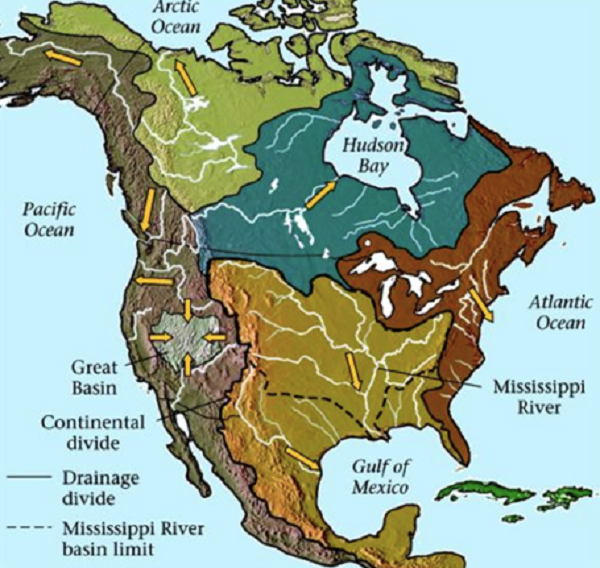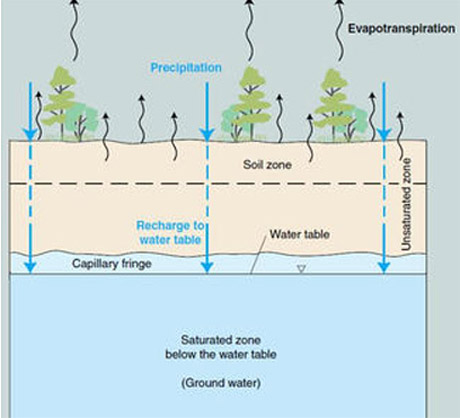|
|

|
  
Watersheds
Watershed Basics

A watershed is an area of land that drains snow melt and rainfall into a specific body of water. Watersheds include networks of rivers, streams, and lakes and the land area surrounding them. Watersheds are separated by high elevation geographic features (mountains, hills, ridges).
Developed areas in a watershed, cities, towns and industrial sites have paved surfaces, roads, parking lots and buildings that repel water rather than absorbing it, concentrating rainfall into the storm sewer systems. The storm water from developed sites is released back to the environment in various ways from controlled release of treated wastewater to overflow release, depending on the system.
Forested areas and agricultural land in the watershed will absorb or “shed” the snow melt in spring, and rain. Some of the moisture will be absorbed by trees, shrubs and grasses, agricultural crops; the excess water will run along the surface in creeks, streams, finding its way into ponds, lakes and reservoirs, and on into rivers and eventually back to the sea. Some of this moisture will soak down through the ground into the aquifers, the underground water bodies.
Surface water – pools of water that accumulate in low areas, including ponds, creeks, streams, rivers lakes and reservoirs. Stormwater swales are low areas that may have water for a short period following heavy rain and completely drain off and dry up between rain events. Surface water can soak into the ground and join the underground water bodies (aquifers), be taken up by growing plants and trees, with excess water following the lay of the land by gravity, flowing down into other water bodies and/or evaporating and accumulating in the atmosphere.
Search for information on your local surface water quality at US Geological Survey here.
Ground water – the moisture that seeps through layers of sand, silt and clay, flows between layers of rock and gravel underground. According to the US Geological Survey, there is 1000 times more water underground than in all the surface rivers and lakes.

What is gorundwater? - USGS (Click on image)
Water is a solvent, meaning that particles of various materials can be picked up by the stream, and dissolved or suspended in water. As the water flows through the watershed’s sand, silt, clay and rock, every trickle of water picks up microscopic living organisms like bacteria, fungus, protozoa, ciliates, nematodes along with minerals, metals, and chemical compounds in the path of the stream.
Check the New York State Department of Environmental Conservation for surface and groundwater quality reports for your watershed.
|
|
All rights reserved 2025 - WTNY - This material may not be reproduced in whole or in part and may not be distributed,
publicly performed, proxy cached or otherwise used, except with express permission.
|
|